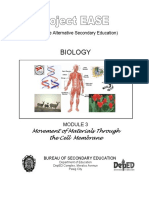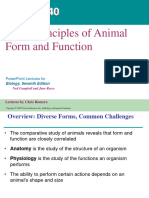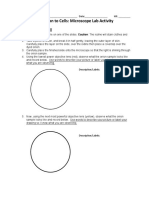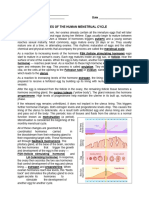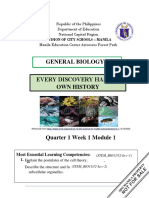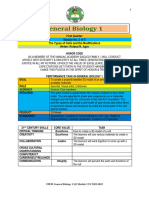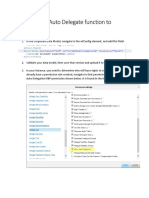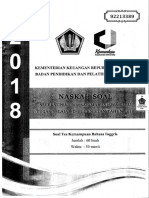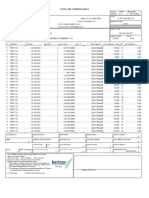0% found this document useful (0 votes)
288 views9 pagesAnswer Sheet: General Biology 1
This document contains materials for a biology module on cells, including assignments, activities, and assessments across four days. Day 1 covers the cell theory with assignments on decoding cryptograms and solving crossword puzzles related to its key figures. Day 2 focuses on cell organelles, with activities identifying main cell parts and relating them to requirements of a functioning city. Day 3 compares and contrasts plant, animal, and bacterial cells through identification questions and a Venn diagram. Day 4 instructs students to create a 3D cell model using recyclable materials guided by a prior sketch.
Uploaded by
HanabiCopyright
© © All Rights Reserved
We take content rights seriously. If you suspect this is your content, claim it here.
Available Formats
Download as PDF, TXT or read online on Scribd
0% found this document useful (0 votes)
288 views9 pagesAnswer Sheet: General Biology 1
This document contains materials for a biology module on cells, including assignments, activities, and assessments across four days. Day 1 covers the cell theory with assignments on decoding cryptograms and solving crossword puzzles related to its key figures. Day 2 focuses on cell organelles, with activities identifying main cell parts and relating them to requirements of a functioning city. Day 3 compares and contrasts plant, animal, and bacterial cells through identification questions and a Venn diagram. Day 4 instructs students to create a 3D cell model using recyclable materials guided by a prior sketch.
Uploaded by
HanabiCopyright
© © All Rights Reserved
We take content rights seriously. If you suspect this is your content, claim it here.
Available Formats
Download as PDF, TXT or read online on Scribd
/ 9






